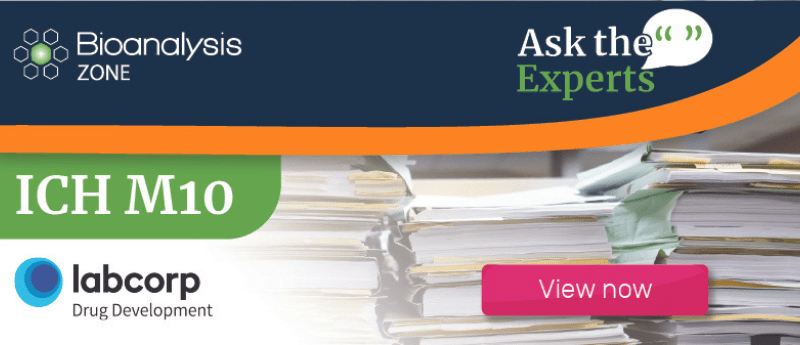1. First, can you give a brief overview of the ICH M10, its history and where it is at currently?


 Mark Arnold (left) and Rob Nelson (right) (Labcorp)
Mark Arnold (left) and Rob Nelson (right) (Labcorp)
Initially, Japan’s MHLW/PMDA made a proposal to ICH slightly in advance of a consortia group from the AAPS, EBF and JBF.
ICH considered the need, adopted the topic and issued a Concept Paper in October 2016. This led to the creation of a Working Group of experts from Member regulatory bodies and Observers (Industry partner organizations) that first met in November 2016. A number of face-to-face meetings resulted in draft guidance that was released globally for public consultation in March 2019.
While a face-to-face meeting of the Working Group was held in the fall of 2019, the COVID-19 pandemic has required virtual meetings to review and assess the industry responses and comments to the draft, and has prevented any in-person meetings that are needed to resolve outstanding issues. Currently it is anticipated that an in-person meeting will not occur until sometime in the first half of 2022, which likely means a final version being submitted to the ICH Assembly for approval later in 2022 or early 2023. Once approved, individual health authorities will have to adopt the M10, meaning that it will come into effect at different times in different regions.
 Kelly Dong (United-Power Pharma Tech Co., Ltd.,)
Kelly Dong (United-Power Pharma Tech Co., Ltd.,)
The topic of bioanalytical method validation was endorsed by the ICH management committee in October 2016. With the joint effort from a group of regulators from different region and industry representatives, the ICH M10 draft version was released in February 2019. This new multidisciplinary guideline applies to bioanalytical method validation and study sample analysis for both chemical and biological therapeutics in support of nonclinical and clinical studies. Public consultation and the focused discussion meetings had subsequentially been held. The guideline is currently in stage III regulatory consultation and discussion prior to its adoption and implementation.
The opinions expressed in this feature are those of the authors and do not necessarily reflect the views of Bioanalysis Zone or Future Science Group.

